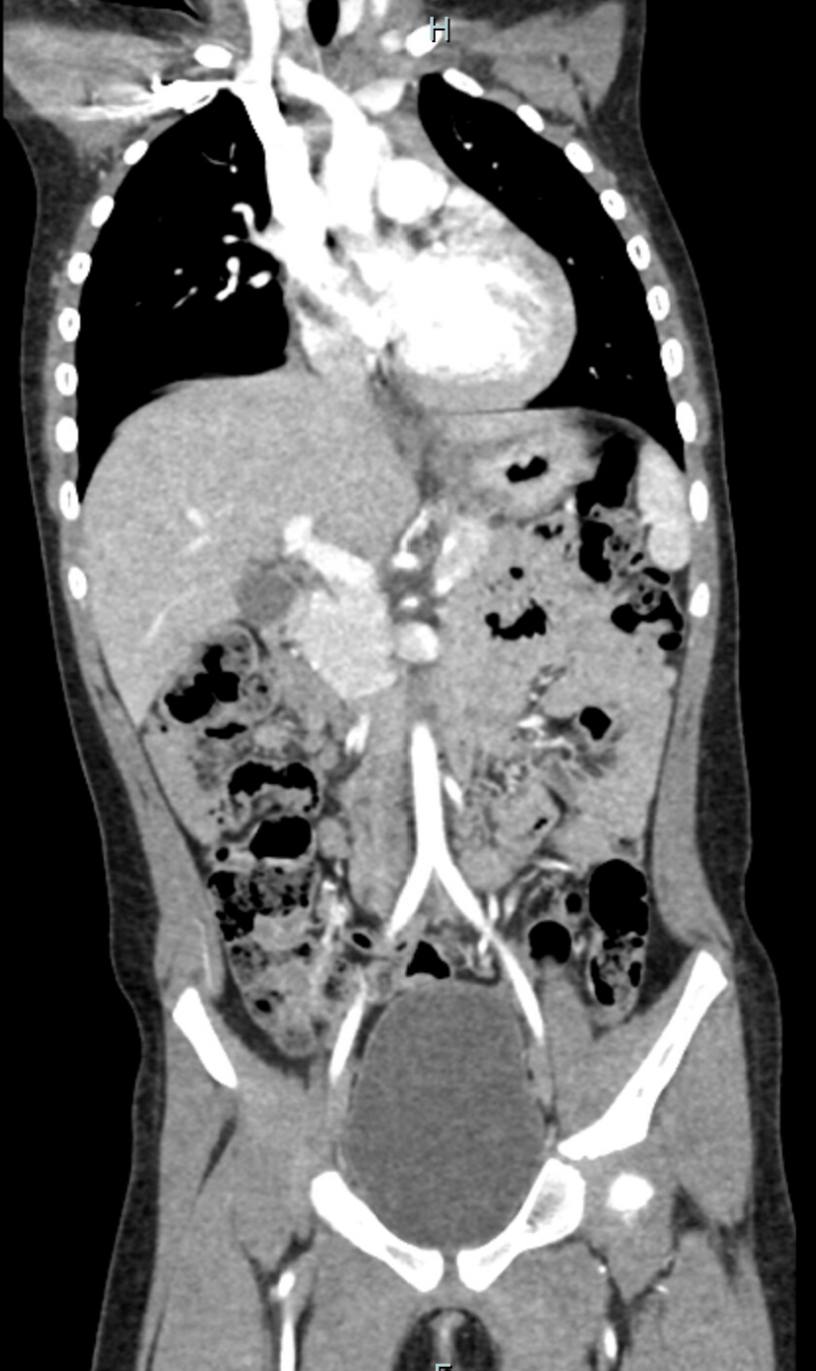Case Presentation: A previously healthy 4-year-old female born in Mexico was sent to the emergency department for elevated blood pressures noted at her routine outpatient clinic visit. On arrival, her blood pressure was 161/126. The patient reported polydipsia, polyuria, and weight loss. Her initial physical exam was unremarkable and her vitals were otherwise within normal range for her age. She was admitted to the Pediatric Intensive Care Unit and oral antihypertensive therapy was initiated. The patient did not initially respond to antihypertensives, requiring multiple changes to medications and doses before her blood pressures started downtrending. Initial labs were unremarkable. Initial renal artery duplex showed unclear evidence of renal artery stenosis (RAS); however, a renal bruit was noted on repeat physical exam so the imaging study was repeated. Renal artery duplex showed 60% stenosis of bilateral renal arteries. Because of concern for RAS and possible middle aortic syndrome, a computed tomography angiography (CTA) of the abdominal aorta and thorax was completed. It revealed a mediastinal mass, a circumferential mass around the abdominal aorta, and a mass encasing and segmentally narrowing the bilateral renal arteries (Fig. 1). Tissue biopsy revealed that the masses were tuberculomas. The patient was started on anti-tuberculosis medications (rifampin, isoniazid, ethambutol, and vitamin B6) and continued on antihypertensive therapy. Repeat CT after 6 months of treatment demonstrated reduced mass burden.
Discussion: The initial differential for hypertensive urgency in a child this age was broad, including postinfectious glomerulonephritis, membranoproliferative glomerulonephritis, systemic lupus erythematosus, RAS, dysautonomia secondary to COVID-19 infection, pheochromocytoma, neuroblastoma, and adrenal adenoma. Normal laboratory findings were inconsistent with many of these diagnoses, making RAS most likely. The three soft tissue masses on imaging were most concerning for neuroblastoma, rhabdomyosarcoma, lymphoma, leukemia, or neuroendocrine neoplasm. Biopsy was critical in finalizing the diagnosis of extrapulmonary tuberculosis. It was later discovered that one of the patient’s parents had previously been treated for tuberculosis.
Conclusions: Up to 85% of pediatric hypertension cases are thought to be due to secondary causes, including renal artery stenosis (RAS). In adults, RAS is most commonly secondary to atherosclerotic diseases. However, in pediatric cases, RAS is thought to be most commonly secondary to congenital causes. Infectious causes of pediatric RAS, such as tuberculomas, are rare and can be difficult to identify and diagnose. Over 95% of renovascular hypertension cases are due to atherosclerosis or fibromuscular dysplasia, but it is important to be aware of other rare causes of renovascular hypertension. The purpose of this case study is to highlight one of these rare causes of renovascular hypertension.

